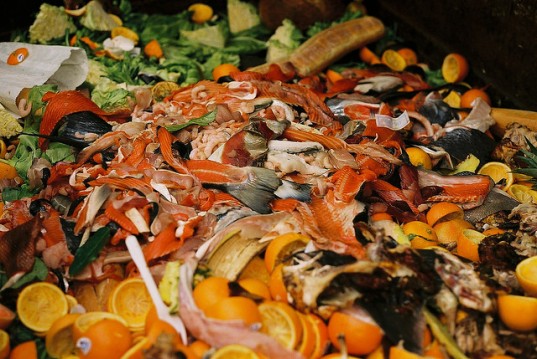The Akshaya Patra Foundation, a not-for-profit organization, is focused on addressing two of the most important challenges in India – hunger and education. Established in year 2000, the Foundation began its work by providing quality mid-day meals to 1500 children in 5 schools in Bangalore with the understanding that the meal would attract children to schools, after which it would be easier to retain them and focus on their holistic development. 14 years later, the Foundation has expanded its footprint to cover over 1.4 million children in 10 states and 24 locations across India.
The Foundation has centralised, automated kitchens that can cook close to 6,000 kilos of rice, 4.5 to 5 tonnes of vegetables and 6,000 litres of sambar, in only 4 hours. In order to make sustainable use of organic waste generated in their kitchens, Akshaya Patra Foundation has set up anaerobic digestion plants to produce biogas which is then used as a cooking fuel. The primary equipment used in the biogas plant includes size reduction equipment, feed preparation tank for hydrolysis of waste stream, anaerobic digester, H2S scrubber and biogas holder.
Working Principle
Vegetable peels, rejects and cooked food waste are shredded and soaked with cooked rice water (also known as ganji) in a feed preparation tank for preparation of homogeneous slurry and fermentative intermediates. The hydrolyzed products are then utilized by the microbial culture, anaerobically in the next stage. This pre-digestion step enables faster and better digestion of organics, making our process highly efficient.
The hydrolyzed organic slurry is fed to the anaerobic digester, exclusively for the high rate biomethanation of organic substrates like food waste. The digester is equipped with slurry distribution mechanism for uniform distribution of slurry over the bacterial culture.
Optimum solids are retained in the digester to maintain the required food-to-microorganism ratio in the digester with the help of a unique baffle arrangement. Mechanical slurry mixing and gas mixing provisions are also included in the AD design to felicitate maximum degradation of organic material for efficient biogas production.
After trapping moisture and scrubbing off hydrogen sulphide from the biogas, it is collected in a gas-holder and a pressurized gas tank. This biogas is piped to the kitchen to be used as a cooking fuel, replacing LPG.
Basic Design Data and Performance Projections
Waste handling capacity 1 ton per day cooked and uncooked food waste with 1 ton per day ganji water
Input Parameters
| Amount of solid organic waste | 1000 Kg/day |
| Amount of organic wastewater | ~ 1000 liters/day ganji (cooked rice water) |
Biogas Production
| Biogas production | ~ 120 – 135 m3/day |
Output Parameters
| Equivalent LPG to replace | 50 – 55 Kg/day (> 2.5 commercial LPG cylinders) |
| Fertilizer (digested leachate) | ~ 1500 – 2000 liters/day |
Major Benefits
Modern biogas installations are providing Akshaya Patra, an ideal platform for managing organic waste on a daily basis. The major benefits are:
- Solid waste disposal at the commercial kitchen site avoiding waste management costs
- Immediate waste processing overcomes problems of flies, mosquitos etc.
- Avoiding instances when the municipality does not pick up waste, creating nuisance, smell, spillage etc.
- Anaerobic digestion of Ganji water instead of directly treating it in ETP, therefore reducing organic load on the ETPs and also contributing to additional biogas production.
The decentralized model of biogas based waste-to-energy plants at Akshaya Patra kitchens ensure waste destruction at source and also reduce the cost incurred by municipalities on waste collection and disposal.
An on-site system, converting food and vegetable waste into green energy is improving our operations and profits by delivering the heat needed to replace cooking LPG while supplying a rich liquid fertilizer as a by-product. Replacement of fossil fuel with LPG highlights our organization’s commitment towards sustainable development and environment protection.
The typical ROI of a plug and play system (without considering waste disposal costs, subsidies and tax benifts) is around three years.
Future Plans
Our future strategy for kitchen-based biogas plant revolves around two major points:
- Utilization of surplus biogas – After consumption of biogas for cooking purposes, Akshaya Patra will consider utilizing surplus biogas for other thermal applications. Additional biogas may be used to heat water before boiler operations, thereby reducing our briquette consumption.
- Digested slurry to be used as a fertilizer – the digested slurry from biogas plant is a good soil amendment for landscaping purposes and we plan to use it in order to reduce the consumption of water for irrigation as well as consumption of chemical fertilizers.

























